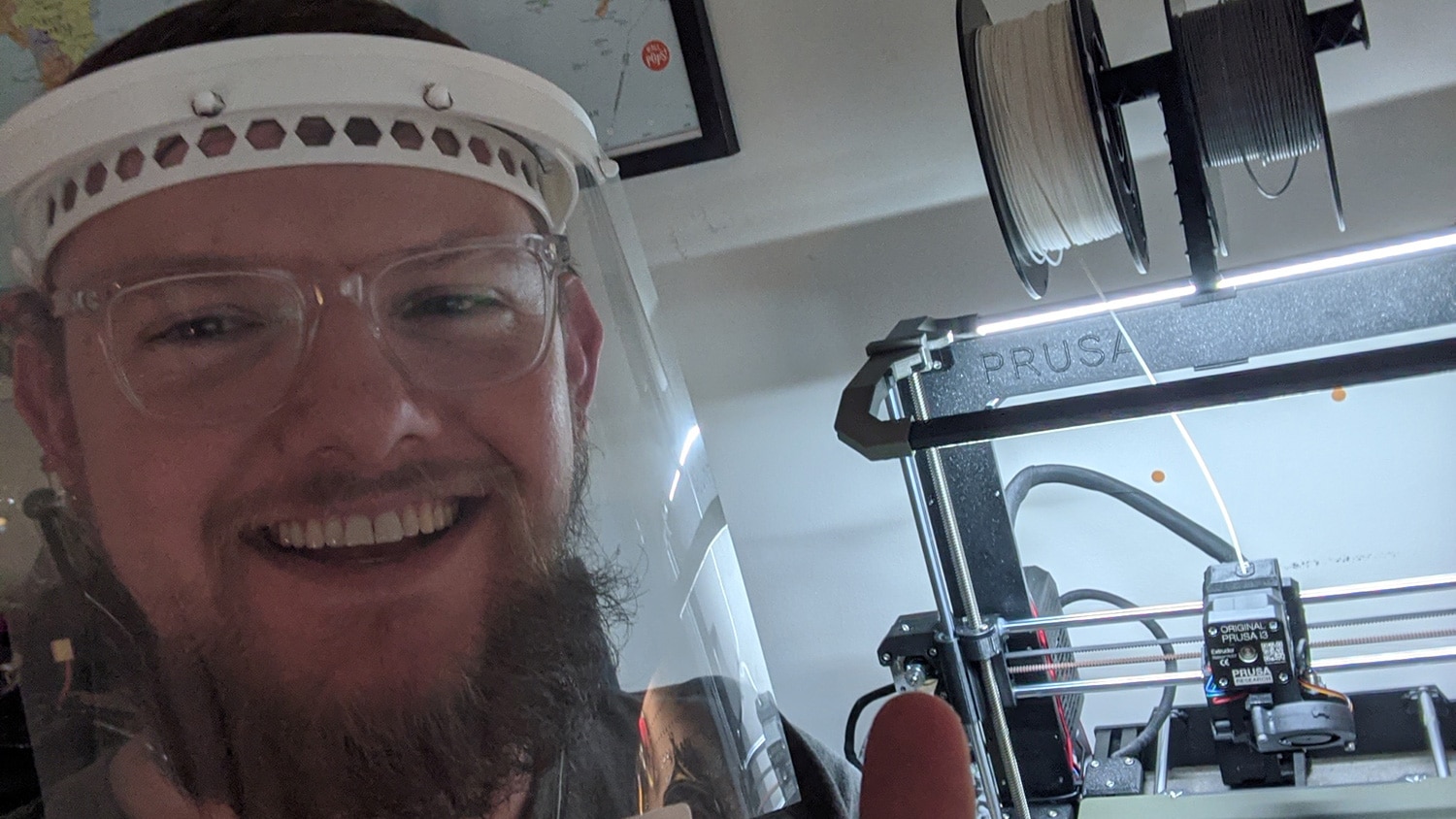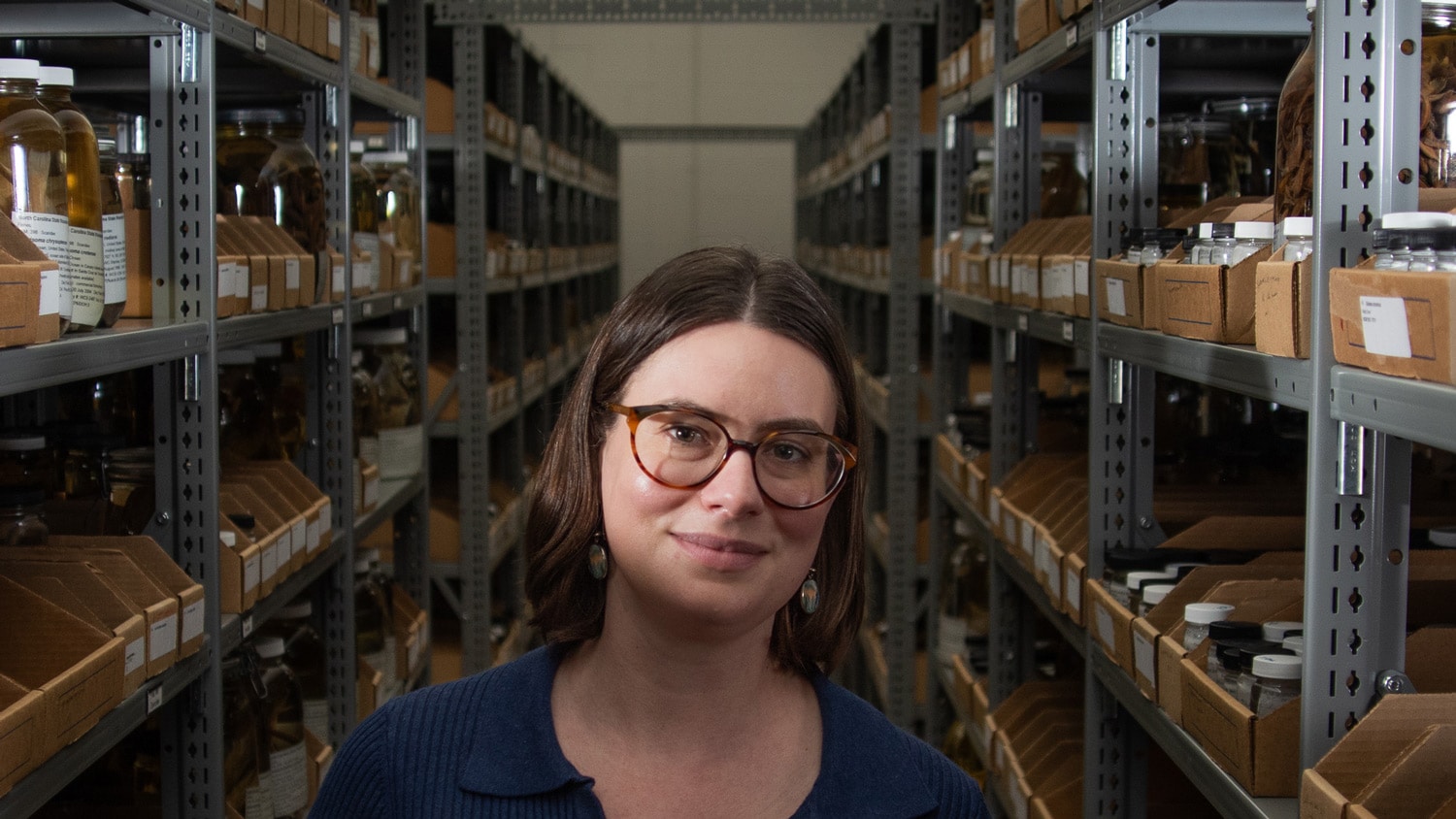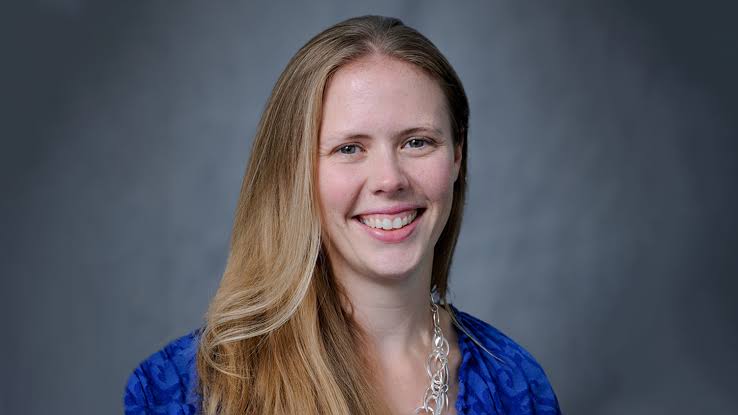When the deadly coronavirus began spreading in the United States a few weeks ago, planetary geology Ph.D. student Corbin Kling knew he wanted to help.
Kling has been using his own home 3D printer to create protective face shields for health care workers on the front lines of the crisis. We talked to him about how he’s using this geology research tool to make a difference.
How did you get started with this project?
About two and a half weeks ago I noticed that the company that built my 3D printer was rapidly prototyping a face shield frame. After their design was approved by the government they uploaded it to their website, and the 3D printer community just jumped on it. I calculated how many I could print and then thought, “How can I find this many overhead transparencies?” I located a bunch in my department that they donated to me, and I’ve been going ever since.
The 3D printer is running about 20 hours a day, and I’ve used about 12 to 15 pounds of filament so far. My dad donated money for me to use to buy materials, so I have enough to print another 160 shields. It feels really good that I’ve been able to get so many done.
How do the face shields work?
I print the frame part, that’s about an inch thick. It has knobs onto which you can fit the overhead transparency on to cover the face. You can use whatever you want in the back; I have a bunch of rubber bands, so that’s what I’ve been using. I’m currently printing a new design that’s just been approved by the National Institutes of Health that adds in a shield that goes up and over the wearer’s head a little bit so no air can get in from the top down.
They wear their masks over their nose and mouth, but the other risk is from airborne particulates that can go in through your eyes or nose. The shields provide an extra layer of defense against those.
What will you be doing with the shields you’ve printed?
I’m delivering about 50 of them I’ve completed so far to the Duke University Hospital emergency room, as well as additional ones that friends in Fayetteville have been working on. I have a contact at the hospital who told me they have an immediate need there. I shipped 60 to family members in health care fields in Miami who needed them and am working on more to send to friends working in health care who have reached out and asked for them.
Why and how did you learn 3D printing?
I study planetary geology. Essentially, I study faults on Earth and apply that knowledge to Mars and other bodies like asteroids.
I became really fascinated with 3D printers about three years ago. I do a lot of drone work for my research, and you can print a lot of drone parts with them. I also started using it to 3D print topographic landscapes for my research posters, and now I’m using it to 3D print topographic globes. The printers are not too hard to use, and there’s a lot of online material to help you learn. Just like any hobby, there are ups and downs to learning the process and how to do it!
Do you have advice for anyone else who wants to help?
I started with GetUsPPE.org. They have a list of all the different things you can do to help and of the donation centers and contacts. You can also reach out to anyone you know in health care who could use anything you make. I have also been keeping a close eye on the National Institutes of Health’s 3D Print Exchange to keep up with their approved models and techniques, ensuring the safety of the wearer.



